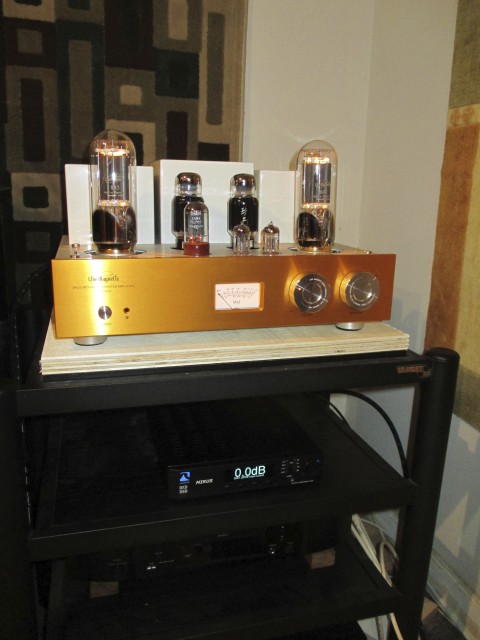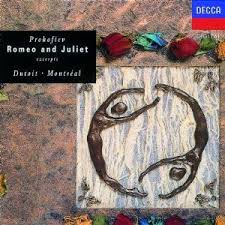Resonessence Labs Mirus DAC review by Tim Smith
$5,000 USD
http://www.resonessencelabs.com
Components used in this review:
Marantz SA-8003, Audiolab M-DAC, Musical Paradise MP-D1 DAC; Pro-Ject RPM 10.1, Musical Surroundings Nova II phono preamp, Graham Slee Era Gold Mark V phono preamp, Dynavector 10×5; Tekton M-Lore, Harbeth Compact 7 ES-3, Magnepan 1.7, Kimber Kable, DH-Labs BL-Ag, Shunyata Research Venom PS8 with Venom Defender.
I had the pleasure of listening to the Resonessence Mirus DAC for two weeks. I knew that my time with the Mirus would be a bit shorter than a customary review session, so I made a point of having it on all day long in my home office. When it left the house I was disappointed to put it mildly. Had I not maxed out my Visa on a Line Magnetic amp shortly before the Mirus went back to the High End Audio Exchange, I would have seriously considered buying the review sample. It is simply the best digital source I have ever had in the house.
How do I love this DAC? Let me count the ways. The Mirus is big and warm and analog-sounding. It is smooth yet powerful. It is also a detail freak’s dream. It scrapes up every last bit of information. Like an Esoteric player, it retrieves every little bit of room ambience. Like an Esoteric, it displays not a hint of digititis. Vinyl lovers will tell you that a good pressing of an LP will invariably sound better than the very best digital version. There will be more air, more body, more warmth, more ‘there’ there. The Resonessence Mirus DAC gets me pretty close to vinyl; that is the best compliment I can pay it.
And at simple redbook cd resolution, it equals SACD, at least in my system it does. With classical music I prefer SACD to vinyl; there is simply a greater rendering of the hall space and the dynamic swings of the orchestra. I compared several top-notch Analogue Productions SACDs–through my Marantz SA-8003–with vinyl and redbook cd versions of the same recordings. Most involved Fritz Reiner or Charles Munch wielding the baton. In some cases, the redbook CD played through the Mirus sounded better than the SACD. In every case, I preferred the Mirus to my vinyl rig. The Marantz is a pretty good SACD player—not an Esoteric or an EMM Labs, to be sure, but it’s no slouch. The Mirus simply imparts a warmth and richness of sound that is not always present with the SACD. To my ears the 8003 and the newer 8004 and 8005 seem to be 90% as good as Marantz’s over-engineered $7000 flagship disc spinner. So the Mirus is in good company, but it is far more versatile, playing so many different formats (basically, everything except SACD). You can use balanced XLR outputs or RCA. I preferred the RCA. And the Mirus mates with Apple’s remote control. Input options are numerous: USB 1.0 and 2.0, Toslink, BNC 1 and 2 (S/PDIF), AES/EBU, and SD Card!
I briefly listened to the Mirus in DSD via the SD Card slot and was impressed with the smoothness, the richness, the flow of Enya’s music. This borrowed SD Card also contained a sampling of blues. In total, about 100 minutes of better-than-SACD sound quality. One of the striking aspects of this DAC is that you can push the volume very high without any sense of compression or breaking apart of the music. I found this to be particularly so when playing DSD.
Back to my stone-aged 16/44 world, with the Mirus fed via a Marantz player or streamed from iMac to Apple TV. Victor Villadangos’ rendition of Antonio Lauro’s guitar music (Antonio Lauro, Guitar Music 2, Naxos 8.570250) is a wonderfully recorded piece of work. The Mirus puts you in the recording space. Geepers, it puts you inside Villadangos’ guitar. The Mirus is highly detailed but it probably delivers enough tone and warmth to satisfy most tone freaks, including me. I demo’d this DAC against an Audiolab M-DAC and a Musical Paradise DAC. The Mirus sounds fuller, richer, more analog-like. It is seemingly louder, more dynamic, with more grunt. It is simply smoother and more powerful at the same time. The utter lack of noise emphasizes the distance between the highs and the lows. This DAC has a Dynamic Range of 130dB! I have listened to this DAC for hours on end. There is detail, yes, but no digititis, no fatigue.
The Mirus is, like all other things, overshadowed by the majestic eye candy that is Line Magnetic.
The Mirus is not unattractive. The user interface is friendly enough for me, but for five large ones one wonders why Resonessence felt compelled to squeeze so much valuable material into such a cramped space. There is a heavy toroid jammed inside. The Mirus appears to be built to bulletproof standards but I wonder how many people really need the compact size when they are shelling out five big ones. It’s not as if most of us are going to put this on an office desktop where space is limited. That’s my only beef with this otherwise tasty piece of prime rig.
The most satisfying aspect of the Mirus, in relation to, say, the Audiolab M-DAC or the Musical Paradise DAC, is that the Canadian plays so well at low volumes. It seems to deliver enough bass, enough tone, enough boogie, even at low levels. As you increase the volume, the sound becomes fuller, but never fatiguing. This might be an indication of how well balanced and smooth the DAC is, from top to bottom.
Béla Fleck,’s “The Bluegrass Sessions: Tales from The Acoustic Planet vol. 2” (Warner Bros. CDW 47332) is a complex tapestry woven with the great Tony Rice, Jerry Douglas, Sam Bush, Mark Schatz, Stuart Duncan, Vassar Clements, Earl Scruggs (on one track) and others. The Mirus excels at unraveling each and every line. The opening track, “Blue Mountain Hop” is a manic romp. I have listened to this track on at least seven or eight very nice digital systems. Never has it made so much sense. The Mirus keeps pace with the rhythmic flow, capturing the mandolin’s highs, the double-bass’s lows, Rice’s fat guitar, Douglas’s slim dobro. Could this be the sixteen channels? Yes, there are eight ES9018 Sabre DACs employed per side!
On Bill Frisell’s “History/Mystery” double CD, Jenny Scheinman’s violin is deep and rich, woody, with long decays. Frisell’s tape loops rise and fall in volume in an otherworldly manner. The Mirus exposes every nuance. The Mirus’s astonishing ability to retrieve detail will tempt you to rediscover all your music.
For example, there is a section of the Mexican punk-alt-metal-polka-folk-ska-electronica-bolero-ranchera-rock band Café Tacuba’s song “La Ingrata” in which the singer Rubén Isaac Albarrán Ortega (he flips stage names like flapjacks) dons his insane persona (or perhaps he re-enters his normal lunar orbit) and unleashes, in an ascending scale that can only be described as demonic in intention, for a good thirty seconds without taking a breath. And yes, the preceding sentence, Foucauldian in its unnecessary complexity, mirrors Café Tacuba’s songwriting style. What I had not noticed until now was the faint but playful accordion in the background during that section. I include the lyrics for your entertainment:
Ingrata, que no ves que estoy sufriendo / Por favor hoy no me digas / Que sin mi te estas muriendo / Que tus lagrimas son falsas / Tu desprecias mis palabras / Y mis besos, pues si quiero hacerte daño / Solo falta que yo quiera lastimarte / Y humillarte
Café Tacuba (now Tacvba to avoid legal issues with the owners of the eponymous café in Mexico City, where Leon Trotsky once measured out his life in coffee spoons) defies categorization–and comprehension! Their music is literally all over the map. Their classic album “Re” is an excellent test disc for reviewers: want some speed metal? Check. Folk? Check. Short samples of Bee Gees and Rush? Why, of course we can sandwich that between a passage of Mexican folk and a large group of indigenous singers. Love balladry? Certainly. This is a road trip cd: I was first introduced to it on a straight-ahead Pinot-free trip in California. I have heard the disc more times than I care to think. Well, not really, since the Mirus literally reinterpreted “Re” for me. As it did with the great Béla Fleck album, the Mirus decoded and explained the music, eliminating the blur, the smear of lesser DACs. To my ears, this is one of the key differences between good and great front ends: the great rigs sort out complex music, even at high SPLs, without causing fatigue.
To see what I mean, try spinning one of Michael Tilson Thomas’ great recordings (there are so many): Prokofiev’s “Romeo and Juliet,” with the San Francisco Symphony. Is there a more dramatic scene in Russian ballet than the “Dance of the Knights”? This fiery rendition is right up there with Charles Dutoit and the Montreal Symphony Orchestra. (On that note, see Dutoit with the MSO and the Toronto Dance Theatre, here: https://www.youtube.com/watch?v=0uwLriaNrhU ). Again, the Mirus imparts a sense of size and space. You feel yourself to be in the hall. As the scene approaches climax, the bassoons’ menacing grunts presage an untimely death.
I foresee no such fate for the Mirus. With no moving parts, and hand-built to high standards in Canada with the owners and designers on site, this may just be the last digital front end you buy. The capacity for software upgrades makes the Mirus future-proof. Until, of course, DSD Infinity comes out.
For $5,000 the Mirus gives you sound that can compete with CD/SACD players priced at $10,000 to $15,000. Highly recommended.
[views]













One Reply to “Resonessence Labs Mirus DAC”